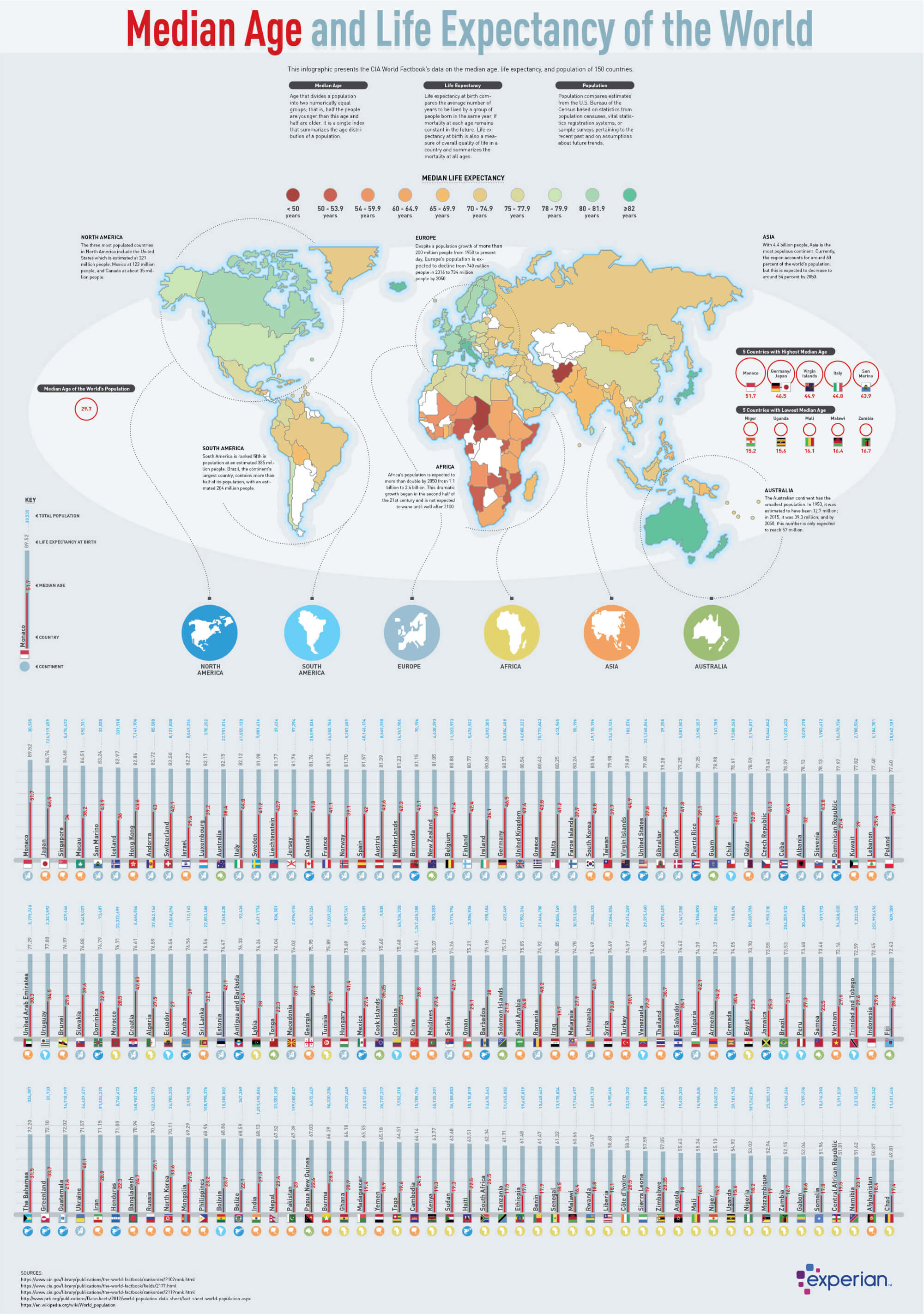Facts About Median Age And Life Expectancy
The dramatic increase in the median age and life expectancy during the 20th century ranks as one of the world’s greatest achievements. Although most babies born in 1900 did not live past age 50, life expectancy at birth now exceeds 82 years in Japan – one of the top three leaders – and is at least 81 years in several other countries.
Less developed regions of the world have experienced a steady increase in life expectancy since World War II, although not all areas have shared in these improvements. One notable exception is the fall in life expectancy in many parts of Africa because of deaths caused by the HIV/AIDS epidemic.
In East Asia, the most dramatic and rapid gains have occurred. Life expectancy at birth has increased from less than 45 years in 1950 to more than 74 years today.
Size Doesn’t Matter
Based on the latest data, the oldest median age and the longest life expectancy is in Monaco. Monaco is a tiny European country south of France. It occupies only 2.02 square km which is equivalent to 0.78 square miles.
Only the Vatican City is smaller than Monaco. The Indian Ocean Territory is approximately 27,200 times bigger than Monaco. If you look at China – it beats all the averages, in a right way: largest population, vast territory and higher than average life expectancy.
Women live longer
You can find an interactive chart of life expectancy comparison by country by gender here, where the size of the circle for every country differs according to the population.
Monaco is a tiny dot on the very top of it, in case you missed it. The chart proves overall, women live longer than men. If we omit all stipulations on the topic, nobody knows why.
Men live longer?
Montserrat is probably the only (or one out of just a few) country where men live longer than women.







